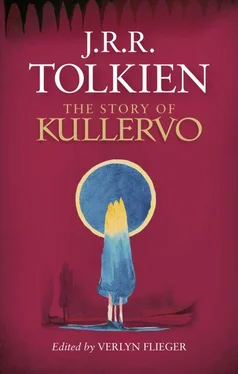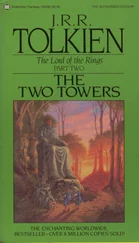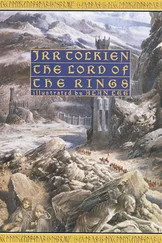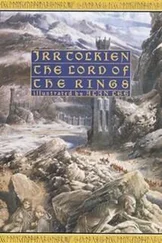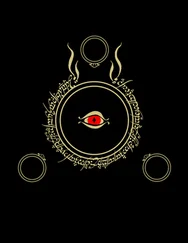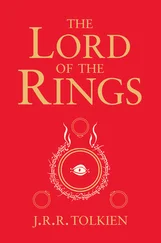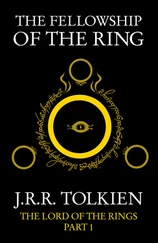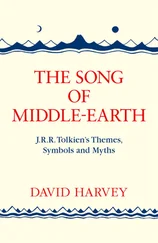Musti becomes a kind of tutelary figure to Kullervo, and gives him magic talismans, three hairs from his coat with which to summon or invoke him in time of danger. These hairs save Kullervo from Untamo’s three attempts to kill him, explicitly with the first (drowning), by implication in the second (burning), and again explicitly in the third (hanging), where the narrative is unequivocal that ‘this magic that had saved Kullervo’s life was the last hair of Musti’. Musti’s magic is ‘about’ Kullervo from then on. Musti follows him when he is sold into slavery, and teaches him the magic that later enables him to use the wolves and bears to kill the smith’s wife. In Tolkien’s notes for the uncompleted ending of the story Musti reappears twice, once when he is killed in Kullervo’s raid on Untamo’s homestead, and at the scene of the suicide where Kullervo stumbles over the ‘body of dead Musti’.
Fifth, his weapons. Like his Kalevala counterpart, Tolkien’s Kullervo has both a knife and a sword. In Kalevala Kullervo laments the breaking of his knife, ‘this iron… heirloom from my father’ (Runo XXXIII ll. 92–93), and explains to the smith’s wife while she is being gnawed by bears and wolves that this is her punishment for causing him to break his knife. In Tolkien’s story the knife has a greater history. It is given to the infant Kullervo when his mother first tells him of the Death of Kalervo (capitalized as if it were a story in itself). It is described as ‘a great knife curiously wrought’ that his mother had ‘caught from the wall’ when Untamo descended on the homestead, but had no chance to use, so swift was the attack. The knife has a name, Sikki, and is instrumental (together with the hair of Musti) in saving Kullervo from being hanged. It is this knife with which the boy carves pictures on the tree, wolves and bears and a huge hound, as well as great fish said to be ‘Kalervo’s sign of old’. The breaking of his knife on the stone in the cake causes Kullervo to lament its loss in verse, addressing the knife by name, calling it his only comrade and ‘thou iron of Kalervo’. The sword makes its appearance late in the story, after Kullervo has met Wanōna again, and their tragedy has taken place. He takes the sword to kill Untamo, and makes it the willing instrument of his own death.
Sixth, the incest, which is the story’s emotional climax. As noted above, in Kalevala this episode is a conflation of disparate runos from the far east of Finland, from Ingria, Karelia, and Archangel, and featuring different heroes with different names. Lönnrot smoothed the edges and regularized the hero’s name to conform to the existing runos in his compilation. His Kullervo, on his way home after paying the taxes, accosts a succession of girls, inviting each into his sleigh. The third girl is the one who accepts, and theirs is a brief encounter quickly followed by the exchange of family information revealing the incest, and leading to her suicide. The scene is potentially tragic, but handled so quickly and tersely that it’s over almost before you know it.
Tolkien makes much more of the event, and builds up to it carefully. His Kullervo, after his murder by proxy of the smith’s wife, and while on the run and on his way to settle his score with Untamo, is met by the mysterious Lady of the Forest, who tells him the path he should follow and counsels him to avoid the wooded mountain, where ‘ill will find him’. Of course he ignores her advice, and goes to ‘drink the sunlight’ on the mountain. Here, in a clearing on the mountain he sees a maiden who tells him she is ‘lost in the evil woods’. At sight of her he forgets his quest, and asks her to be his ‘comrade.’ She is frightened, telling him that ‘Death walketh with thee’, and ‘Little does thy look consort with maidens’. Angry that she has made fun of his ugliness and hurt that she has rejected him, he pursues her through the woods and carries her off. Though at first she rejects his advances, she does not long resist him, and they live together in apparent happiness in the wild until the fatal day when she asks him to tell her who his kinfolk are.
His reply that he is the son of Kalervo is the revelation that leads to her realization that she and her lover are brother and sister. In Tolkien’s treatment it becomes one of the most dramatic moments in the story, for Tolkien so manages the scene that the reader realizes the truth before Kullervo does. The maiden says no word of her discovery but stands gazing at him ‘with outstretched hand’, crying out that her path has led her ‘deeper deeper into darkness/ Deeper deeper into sorrow/ Into woe and into horror… For I go in dark and terror/ Down to Tuoni to the River.’ Running away from Kullervo ‘like a shivering ray of light in the dawn light’ she comes to the waterfall and throws herself over the brink. But this is all we are told about her at this point. Though she recounts her own story, she does not reveal her parentage. Nor does Tolkien reveal it directly, letting her subsequent suicide and Kullervo’s awakened memory, his ‘old knowledge’ of her speech and manner and the violence of her reaction underscore without explaining the tragedy of the situation. Only at the end of the story is Kullervo made to understand who she is and realize what he has done.
Sixth and last, the ending. Lönnrot’s conflated and ill-assorted version takes Kullervo back to his second family, then to war against Untamo, then home to find that all his second family are now dead, and finally to his decision to end his life by asking his sword if it is willing to kill him. It is and it does and he dies, still alienated, isolated and alone. Tolkien left his version unfinished, breaking it off at the point where Kullervo, horrified in dawning suspicion of who the maiden is, and witness to her suicide, takes his sword and rushes blindly into the dark. But Tolkien had the end in mind, and a clear sense of how he wanted to treat it. Jotted outline notes have Kullervo go back to Untamo’s home, kill him and lay it waste, then be visited in a dream by his mother’s ghost who says that she has met her daughter in the underworld and confirms that she is the maiden who killed herself. It seems clear that Tolkien intended this to be the delayed moment of dyscatastrophe from which there is no upward turn, the hitherto-withheld information that he has violated his sister. Waking in terror from this overload of shame and sorrow, the anguished Kullervo rushes into the woods wailing ‘Kivutar’ (an alternate name for his sister), and comes to the glade where they first met. It is here that he asks his sword if it will kill him. It is more than willing, and he dies on its point.
Both Tolkien’s re-working of his source and his story’s relation to his subsequent work are clear. His Kullervo is the hinge between the rather weird Kullervo of Kalevala and the tragic, mixed-up Túrin Turambar of the ‘Silmarillion’, providing Túrin with all the family trauma, all the pent-up anger and resentment, all the negative emotions which fuel that character’s bad decisions and make him so memorable. The geeky misfit of Kalevala becomes the angry, alienated, grudge-nursing outsider of The Story of Kullervo , who in turn develops into the fuller, more psychologically developed, self-isolating figure of Túrin Turambar, clearly related to his precursors but given a more coherent world and clearer framework within which to act out his tragedy.
Tolkien smooths Kalevala ’s awkward two-family structure into one family with several siblings and this in turn becomes the war-torn and disastrously reunited family of Túrin. The unknown and unnamed sister of Kalevala becomes Wanōna, ‘Weeping’, in The Story of Kullervo , Kullervo’s twin and companion in hardship, and Wanōna in turn contributes to both Túrin’s dearly loved and missed sister Lalaith, ‘Laughter’, and to the never-seen Niënor ‘Mourning’, who becomes Níniel, the ‘Tear-maiden’ whom he meets and marries, all-unknowing who she is. All these meanings are significant, but the one for Wanōna is an unmistakable precursor of the names for Túrin’s never-before-seen sister/wife. It is worth noting that in Tolkien’s outline for the story’s ending, his Kullervo cries out to his sister calling her Kivutar , ‘Pain’. In Kalevala Kivutar is the goddess of Pain and Suffering. While Edith was clearly wife, not sister, their teenage romance and subsequent enforced separation and what Tolkien called ‘the dreadful sufferings of our childhoods, from which we rescued one another’ ( Letters , p. 421) are strong reminders of the loneliness of Kullervo and Wanōna as children, and of Kullervo’s anguish when she leaves him in death.
Читать дальше
